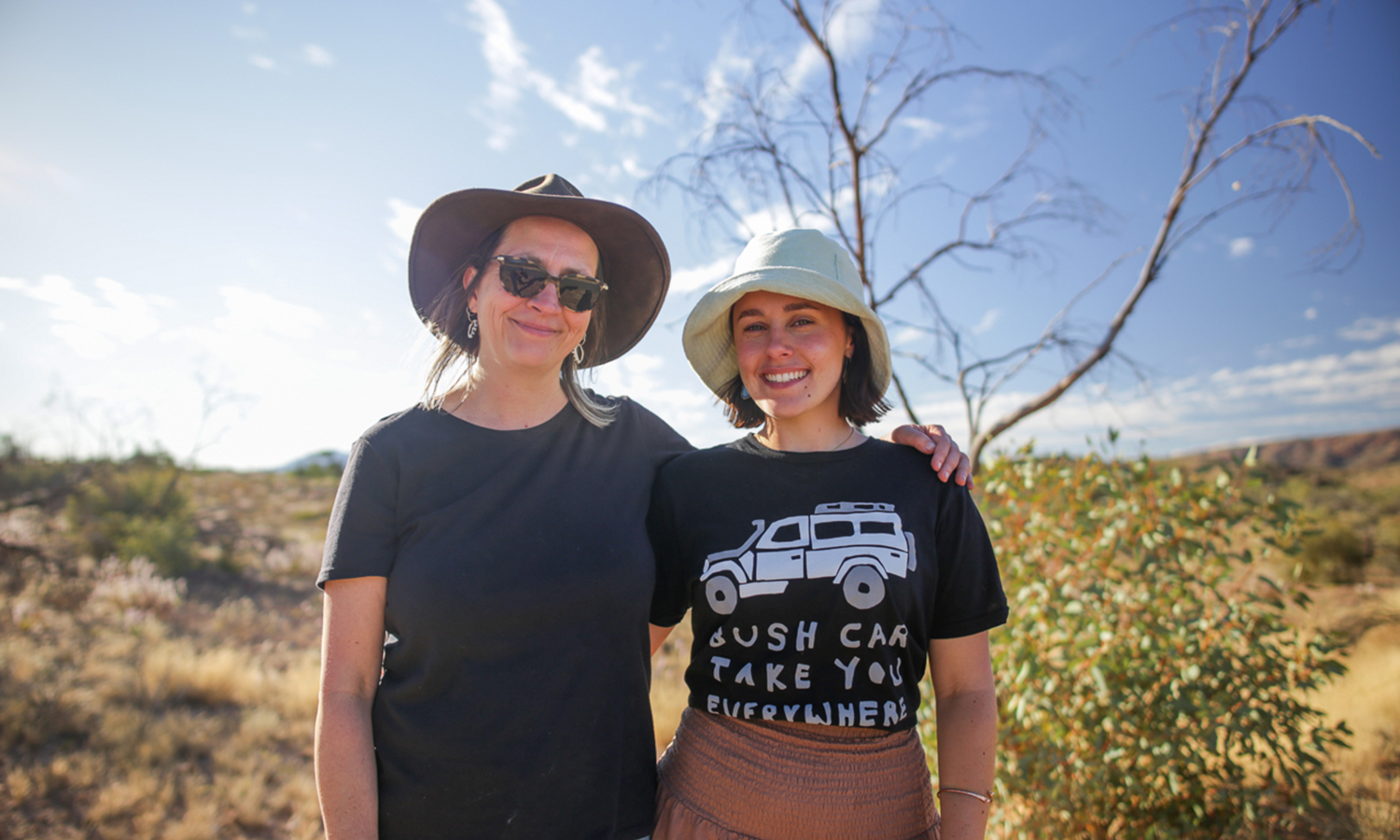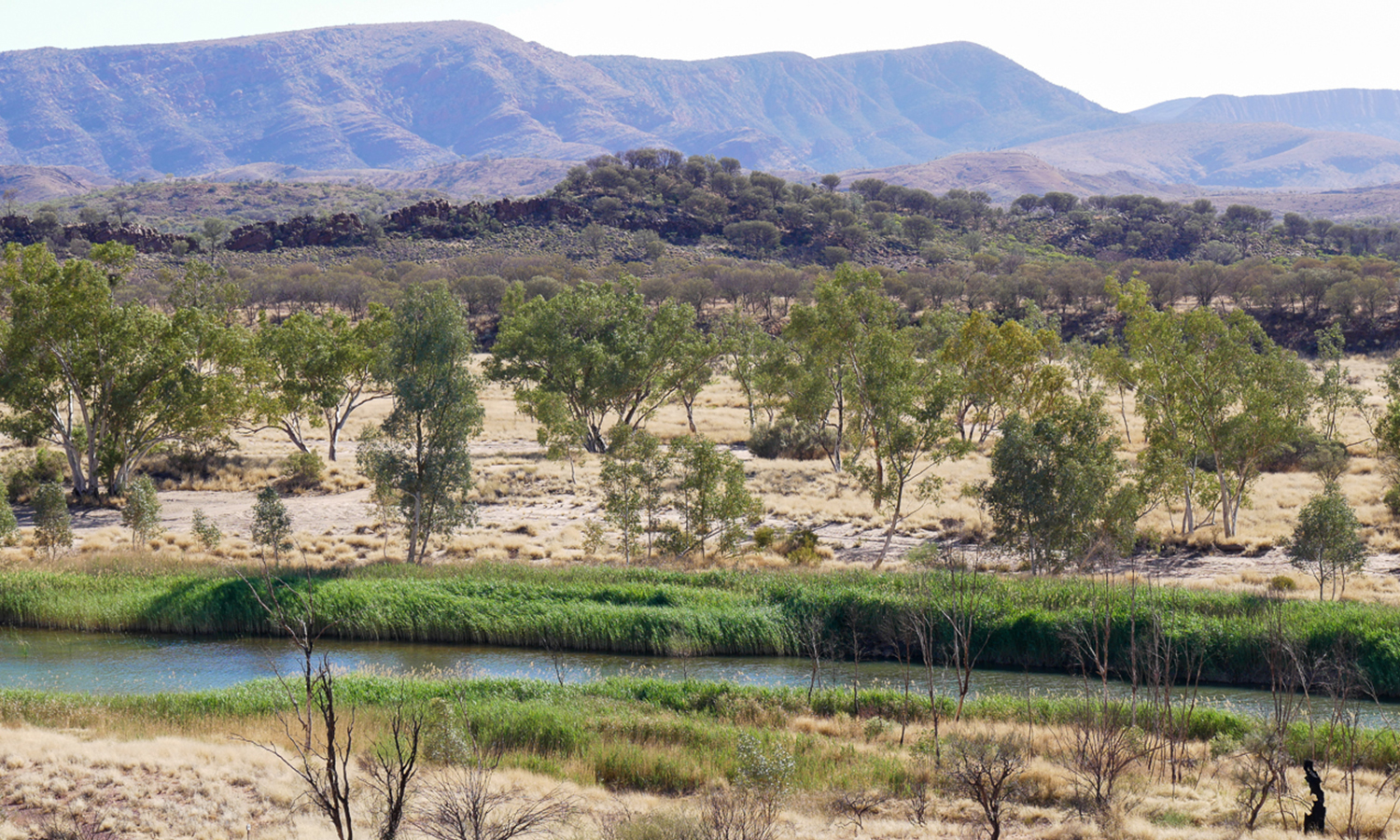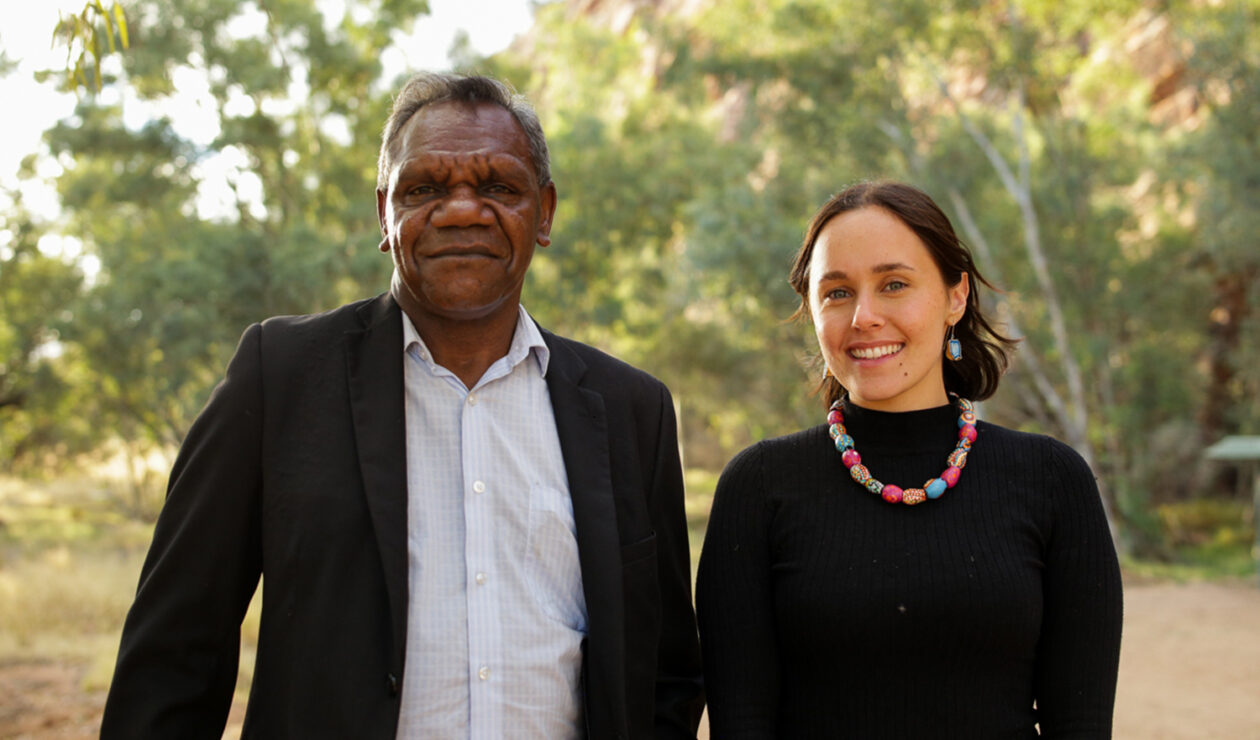This stunning documentary series, being shown weekly on SBS and NITV, celebrates the majesty of Larapinta – the original Arrernte name for the Finke River – and its deeply embedded spiritual and environmental history.
The Larapinta series is helmed by proud Arrernte and Luritja woman Talia Liddle, who takes us on a journey to learn more about the river connected with her ancestral homeland. Liddle’s personal investment creates an earnest and intimate investigation into the past, present and future of the main artery of the Red Centre.
Along the way, Liddle yarns with many people who call Larapinta home, including a bevy of rangers, scientists, historians, Traditional Owners and First Nations peoples who shed light on the form, function and fortunes of this once-mighty river.
With the breadth of knowledge lent by these varied experts and the dialogue created between them, Larapinta invites us to explore the concept of “two-way learning”. This demonstration is fluid and fluent – in one episode, ecological scientists yarn with Traditional Owners about marine biology samples taken from waterholes while the Owners share details about the water levels and abundance of life seen in the river during decades past. This is just one of many moments in the series where Songlines, Dreaming Stories and First Nations knowledge help inform academic data collection and projections.

Ecologist Dr Christine Schlesinger and Larapinta presenter Talia Liddle. Photo: SBS/NITV
The Larapinta river stretches over 750km, starting in Tjoritja (the West MacDonnell Ranges) and draining into Kati Thanda (Lake Eyre Basin), and is believed to be at least 350 million years old. Telling the story of a river that – through millennia – saw the megafauna roam and was once as bountiful as the Daintree rainforest, the documentary is not just about the water body but also the First Nations people who have relied on it for water, food, comfort and spirit.
Liddle is invited onto Country by family members and Traditional Owners who offer both a beautifully sincere insight into the importance of Larapinta in their lives and alarming evidence of how much the river system has drastically changed, even in the past 30 years. This makes the series’ call for environmental understanding and action hit hard.
It is sadly inevitable that a contemporary examination of a beautiful ecosystem like Larapinta must constantly return to messages about its declining state and ideas to help it thrive again. But, it is in handling this vital information that Larapinta shines as a documentary. The series doesn’t simply invite viewers to uncover problems and solutions along an unfolding journey, it also places these effectively within a wider ecological discourse.
The task of rectifying the effects of climate change and colonisation on the Larapinta is – as everywhere – simultaneously quite simple and incredibly difficult. Limiting soil erosion, controlling the roaming feral species and ridding the Northern Territory of Buffel Grass are constant threads in the series, as speakers call for further action on these ecological dangers. Unfortunately, such policies can face resistance, with some private landholders, many of whom benefit from the symptoms of colonisation, reluctant to expend resources and allow access to land.

The captivating landscapes of Larapinta. Photo: SBS / NITV
The incredibly rich stories and personal histories captured by the Larapinta crew are matched by the breathtaking scenes and landscapes they commit to film. From Mpulungkinya (Palm Valley) to the Three Mile Water Hole to the enthralling Kati Thanda (Lake Eyre), lead cinematographer Torstein Dyrting has a knack for catching the majesty and mystery of Central Australia and Larapinta itself.
The visual spectacle never tires, thanks to the effective and immersive pacing provided by editor Kimberley West, who avoids the dual documentary traps of either allowing a shot to linger too long or cutting the visual journey short and leaving the audience wanting more.
Between the insightful Dreaming of First Nations people and the in-depth analysis of scientists, the immersive shots of the river’s ecologies and the illumination of its ancient history, there is something for every viewer in this spiritual fact-finding quest along the banks of the ancient artery called Larapinta.
Larapinta premiered on August 19, with new episodes airing weekly on Saturdays at 8.30pm on NITV. It is also available to stream now on SBS On Demand.

Get InReview in your inbox – free each Saturday. Local arts and culture – covered.
Thanks for signing up to the InReview newsletter.
Kyron Weetra is a proud Nharangga/Saxon clan man. He is one of the first recipients of the Arts SA and InReview First Nations Arts Writing Mentorship. Kyron is working with experienced writer, visual artist and curator Troy-Anthony Baylis – who is a descendant of the Jawoyn people from the Northern Territory and is also of Irish ancestry – to write a series of articles for publication in InReview.
Support local arts journalism
Your support will help us continue the important work of InReview in publishing free professional journalism that celebrates, interrogates and amplifies arts and culture in South Australia.
Donate Here




